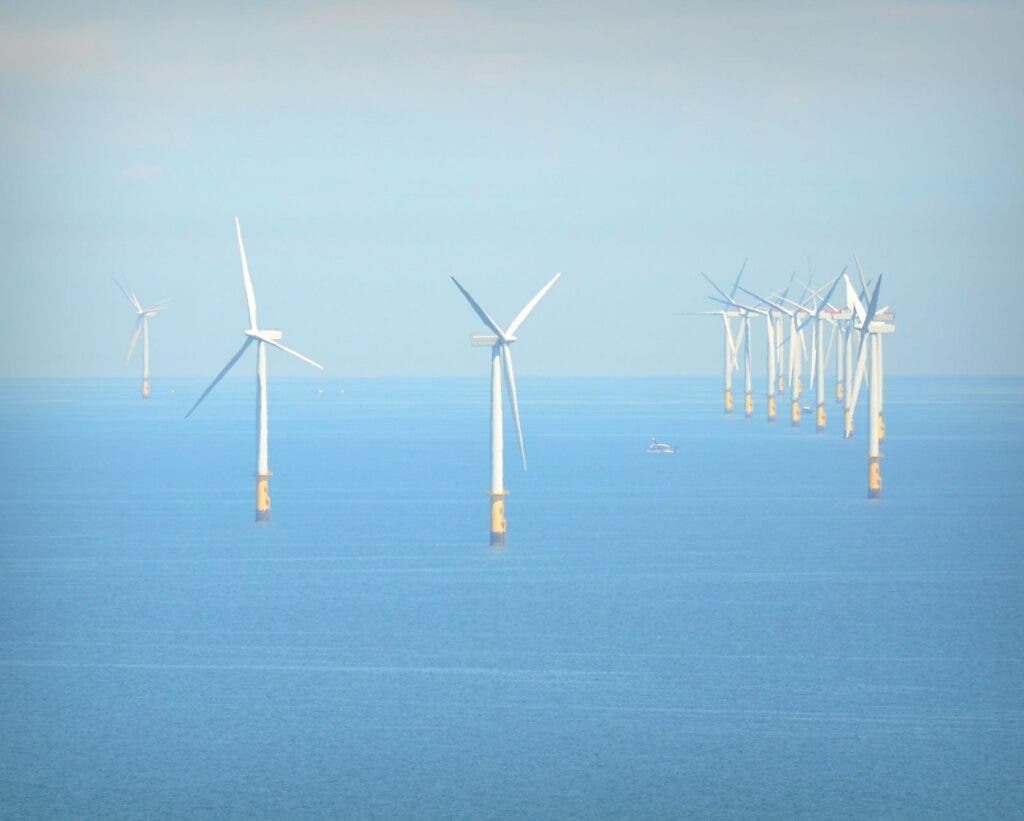Renewable energy is expanding fast in the United Kingdom, slashing carbon emissions and electricity costs across the board, according to recently published government figures.

Carbon emissions from UK electricity production dropped by more than a third during the coronavirus lockdown, as the expansion of renewables continues. The carbon intensity of the energy grid reached 21 grams of CO2 per kilowatt-hour in May, according to a report by Imperial College London.
The report, issued for Drax, UK’s largest power generator, found that lockdown measures caused the electricity demand in the United Kingdom to fall by 13% in the second quarter (compared to the same months last year), which helped the share of renewables grow by a third to 40% of the energy mix.
The data on renewables included electricity generated by solar farms, wind turbines, hydropower projects, and biomass. The carbon intensity of the electricity system dropped by a fifth to 153 grams of carbon per kilowatt-hour, while prices fell by more than 40% during the lockdown, the report showed.
Dr. Iain Staffell of Imperial College London, lead author of the energy report, told The Guardian that the past few months have “given the country a glimpse into the future for our power system, with higher levels of renewable energy and lower demand make for a difficult balancing act”.
Dropping costs
Recent UK government figures showed that electricity generated from wind and solar is between 30% and 50% cheaper than previously thought. The government published the levelized cost of energy, a measure of the average net present cost of electricity generation, which showed this lower price.
The report represents the UK’s first public admission of the significant reductions in renewable costs in recent years. The government had previously carried out internal updates to its cost estimates in 2018 and 2019 but these were never published despite repeated requests in parliament.
Back in 2013, the UK estimated that an offshore wind farm operating in 2025 would generate electricity at $186 per megawatt. The estimation was revised down by 24% in 2016 to $142. Now, the latest estimate in the report set the cost at $76, corresponding to a 47% reduction from 2016.
Similar dramatic reductions can be seen for onshore wind and solar, with energy costs for energy plants operating in 2025 estimated at 50% lower than previously. In contrast, the report didn’t review previous estimates for the cost of nuclear power, noting that nuclear should achieve a 30% cost reduction by 2030.
This reduction in the price of renewable energy is driven by advancing technology, with more efficient and larger manufacturing plants for solar panels and wind turbines. This adds up with lower operating costs, longer project lifetimes, and more operational experience running renewable projects.
Auctions for UK government contracts have recently reflected the drop in costs. The government awarded contracts for offshore wind farms, due to start operating in the mid-2020s, at prices below the costs of existing gas-fired power stations, making the windfarms subsidy-free.
The estimates included in the report showed that wind and solar will continue to get cheaper over time. Offshore wind will become cheaper than onshore by the mid-2030s, mainly due to larger turbine sizes, which will move from the current 9MW to a record of 20 MW by 2040.
Increased ambition
The National Infrastructure Commission (NIC) recently suggested that the UK government increase its renewable electricity target from 50% to 65% by 2030, arguing that the lower costs mean the country should ramp up its ambition for a low-carbon electricity system.
The commission called for shifts in government policy to support more renewable electricity schemes and encourage private investment to drive innovation. It recommended the deployment of new auctions to accelerate offshore and onshore wind as well as solar power projects.
“The government should be credited for recent steps to encourage quicker deployment of renewables, and for setting up successful mechanisms for encouraging private sector investment,” said NIC chair John Armitt in a statement. “These latest projections suggest we can afford to go further, faster without hitting consumers in the pocket.”









